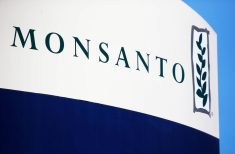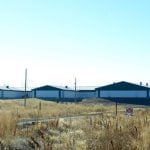How do you plan for — and manage — the kind of weather risk Manitoba farmers have suffered through lately?
First it was years of prolonged drought, including last year’s acute blast. That crippled crop production, all but halted forage growth and raised the serious risk of some rural communities running out of drinking water.
Then we had a winter that fell into the deep freeze and only climbed out every few days for snow to wallop us, followed by the spring that wouldn’t come with one Colorado low after another hitting the province.
Read Also

MANITOBA AG DAYS 2026: Stacked equipment category expected at Innovation Showcase
Ten of 28 Innovation Showcase entries at the Manitoba Ag Days 2026 farm show Jan. 20-22 in Brandon are in the equipment category.
And now, as summer is finally nearing, and the crops are finally getting planted, Westman farmers got smoked with a huge rainfall. Souris, for example, was on the receiving end of 88 mm (3.5 inches) in a 24-hour period.
Farmers in the area were sharing photos of drowned crops on social media networks and sharing their frustration too — sometimes in fairly colourful terms.
That level of frustration is certainly understandable, and anyone with an iota of empathy has to feel for those producers. High input costs and uncertain weather have them grappling with some serious potential economic fallout.
But at least crop producers have a suite of well-established safety nets. Ranging from crop insurance to AgriStability and AgriInvest, the programs at least more or less function, especially crop insurance. Could they be made better? Certainly, and that’s an ongoing effort.
But the sector that’s been left behind again and again is livestock, especially in the beef, sheep and bison industries where it’s still practised as an outdoor sport.
These are the producers with the slimmest of margins and the existing programs simply don’t seem to work for them, as Alexis Stockford reports in our front-page story for our June 23 issue.
These farmers are, rightly, voting with their feet and aren’t signing up for the programs that are available. In doing so they’re making a rational decision. Manitoba Agriculture Minister Derek Johnson likens it to home insurance. If the house burned down and insurance didn’t pay out, the homeowner would be mad. If it burned down a second time and didn’t pay out, they’d never buy it again.
It’s forced livestock producers into an unenviable situation where they’re seeking ad hoc programs to deal with increasingly frequent disasters where, by design, the AgriRecovery program intended to address them has no trigger.
Instead, they’re forced to go, hat in hand, begging for the same level of support the rest of the industry takes for granted. If the provincial government of the day feels it’s justified, wants to spend the money and can be convinced, it will ask the feds to set the wheels in motion.
Older grain producers will remember, all too well, their own similar challenges in the 1980s and 1990s, when a period of low grain prices put their sector on the ropes. They should also remember the nerve-racking uncertainty that came with a support model that depended on lobbying and political will.
Simply put, many livestock producers in Canada are falling through the strands of the safety net that’s intended to protect all farmers in the country from the vagaries of weather, price volatility and trade upsets. They’re being treated like second-class citizens and that needs to change.
There’s a golden opportunity for that to happen on the horizon. Just over a year from now the provinces and federal government should be finalizing the newest agriculture policy framework and the business risk management programs that are the biggest part of that framework.
But it would seem the attention of political leaders is elsewhere, if their recent ‘Guelph Statement’ is any indication. The PDF available online of its key points is especially handy for a cynical journalist like me because I can use the search function to create a picture of the thinking of policymakers.
In this document, climate gets seven mentions. Trade is mentioned six times. Farmers are mentioned one time. And livestock is nowhere to be seen.
Perhaps that’s an overly simplistic analysis, but it does suggest that the federal and provincial governments are eyeing agriculture as a solution — or at least as a contributor to the solution of — some of their larger and thornier problems.
And that’s fine. After all, the agriculture sector is a vital part of the nation’s economy and can and should be considered. But that consideration should go both ways, and the needs of the sector should also be considered at the same time.
One of the greatest needs is for risk management programs that work. And where they don’t work — such as for some livestock producers — their reform should be at the very top of the agenda.















